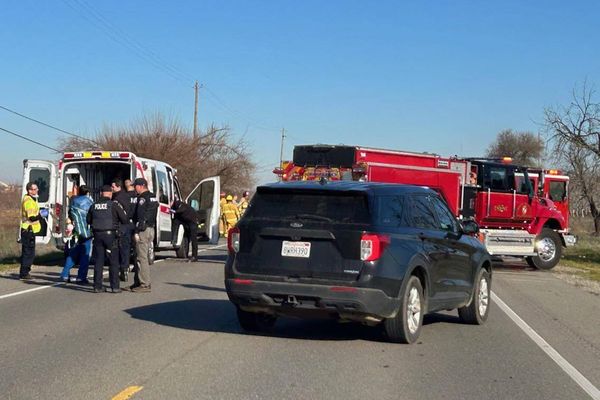The Murray cod may have disappeared from reaches of the Darling-Baaka River between Bourke and Louth.
Researchers say the species is at a crossroads, with numbers too low to recover naturally in the area.
Indigenous people have relied on it as a food source for thousands of years and there are photographs of massive fish being pulled out of the river system in vast numbers in previous generations.
But the most recent drought was devastating for fish species along the Darling-Baaka, with massive fish kills along vast stretches of the river.
Water monitoring in the area between Bourke and Louth between 2019, 2020 and 2021 recorded only six Murray cod.
There were none in last year's survey.
The fish are being monitored by the a Commonwealth Environmental Water Office Monitoring, Evaluation and Research program that looks at how river environments respond to water for the environment.
Monitoring program leader Paul Frazier, from 2Rog Consulting, has been focusing on the species in the Warrego-Darling and Gwydir rivers.
Dr Frazier said the impact of introduced carp, the removal of habitat which fish used to breed in the river, the presence of weirs that obstructed fish migration, overfishing and poor water quality had impacted the species.
But he said he was hoping for a revival.
He said he expected to see the numbers rise in the most recent survey survey given there had been a couple of wet years, but was alarmed when that didn't happen.
"Our survey for 2023 will be underway in the next few months, so hopefully we'll find a miracle and they come back, but after three years of surveys when we only found six adult Murray cod and no smaller ones, it's hard to see how they can breed back," he said.
Dr Frazier said he hoped improved water quality could make a difference.
"They're not mobile, they can move a bit but they tend to have home patches, so they're susceptible during events like the last drought which dries everything out," he said.
But Dr Frazier said the species could be saved.
"It's really about whether we value them enough ... it costs money and it requires an effort from society ... the actual science is not that hard, it's the political will," he said.
In other parts of the river the Murray cod is doing better.
Fisheries data analysed by the NSW Department of Primary Industries suggests the number has improved over the past two decades but some areas remain critical.
Environmental water controlled by the Commonwealth Environmental Water Holder is being used to protect river flows and work is being done to remove barriers to fish movement.
Commonwealth Environmental Water Holder representative Simon Banks said the authority was working with other agencies to help out, but more needed to be done to bring back large woody habitat along the river.
"Murray cod use large woody habitat for spawning sites, shelter and territorial markers," he said.
Dr Frazier said authorities had also identified key areas to put logs and branches back in the river for fish, and he hoped it would make a difference.
"We can't sustain another event like the last drought with these native species — we'll just lose them — and large iconic fish like the Murray cod are just too important to lose," he said.







